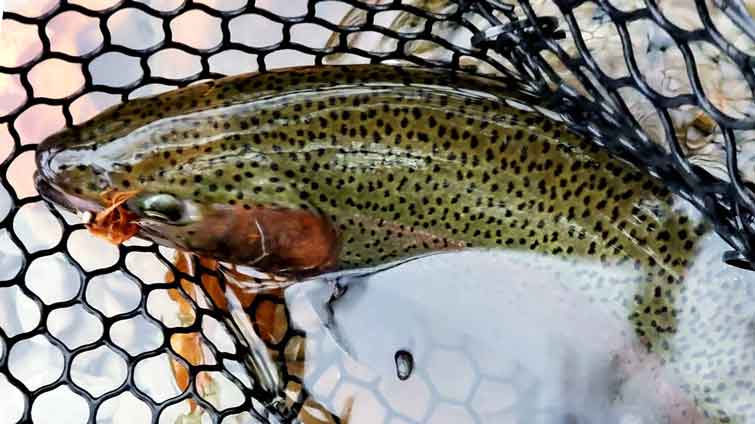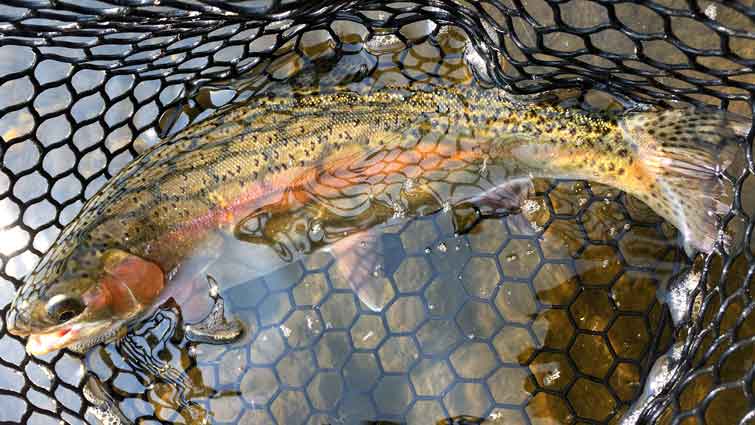There are a few things to consider when choosing a fly fishing vest. The first is what type of fishing you do. If you mostly fish for trout in streams, you'll need a different vest than someone who fishes for bass in ponds. Vests come in many different shapes and sizes, and each type is designed for a specific purpose.
To choose a fly fishing vest, consider how much gear you want to carry with you. Some vests have lots of pockets and compartments, while others are more streamlined. If you plan on carrying a lot of gear, you'll need a vest with plenty of storage space.

Another factor to consider is the climate where you fish. If you fish in cold weather, you'll need a vest with thermal insulation. If you fish in hot weather, you'll need a vest with ventilation to keep you cool. In this article, we'll explore some different kinds of fly fishing vests, what to look for, and how to choose the right one.
What to Look for In a Fly Fishing Vest
When you're searching for a fly fishing vest, there are a few key features to look for. First, you'll want to consider the climate where you fish. If you fish in cold weather, you'll need a vest with thermal insulation. If you fish in hot weather, you'll need a vest with ventilation to keep you cool.
Another factor to consider is the amount of gear you plan on carrying. Some vests have lots of pockets and compartments, while others are more streamlined. If you plan on carrying a lot of gear, you'll need a vest with plenty of storage space.

Finally, consider your personal preferences. Some people prefer vests with a lot of padding and support, while others prefer vests that are lightweight and comfortable.
When looking for a fly fishing vest, you should look for the following seven features:
- Insulation
- Gear Carrying Capabilities
- Comfort
- Ventilation
- Durability
- Style
- Price
These factors will help you choose the best vest for your needs. A good fly fishing vest will keep you warm in cold weather and cool in hot weather. A good fly fishing vest should be comfortable to wear. It should have enough padding to support your weight and provide ventilation to keep you cool. Look for vests with mesh panels or other ventilation features.

When choosing a fly fishing vest, you'll need to consider a few key factors. If you plan on fishing in cold weather, you'll need a vest that will keep you warm. If you plan on carrying a lot of gear, you'll need a vest with plenty of storage space. Consider the style and comfort and any personal preferences you may have.
Insulation
Consider the climate you'll be fishing in. If you are fishing in cold weather, you'll need a vest with thermal insulation. If you fish in hot weather, you'll need a vest with ventilation to keep you cool.
If you plan on fishing in cold weather, you'll need a vest with insulation. Some vests have removable insulation, which allows you to adjust the level of warmth depending on the weather conditions.

Gear Carrying Capabilities
Another factor to consider is the amount of gear you plan on carrying. Some vests have lots of pockets and compartments, while others are more streamlined. If you plan on carrying a lot of gear, you'll need a vest with plenty of storage space.
If you plan on carrying a lot of gear, you'll need a vest with plenty of storage space. Most vests have at least one pocket, but some vests have up to ten pockets. Additionally, some vests have compartments that can hold fly boxes, reels, and other gear.

One of the most important features to look for in a fly fishing vest is ample pocket space. You'll want to be able to store all your gear, including your fly box, waders, boots, and other essentials, but not be too heavy. Look for vests that have multiple pockets and compartments, as well as a built-in rain cover for protection.
Comfort
When choosing a vest, it's important to consider your personal preferences. Some people prefer vests with a lot of padding, while others prefer vests with less padding. Additionally, some people prefer vests with a lot of adjustment options, while others prefer vests that are more form-fitting.
Comfort is especially important if you plan on wearing your vest for an extended period of time. Longer fly fishing trips often involve a lot of walking, so it's essential to choose a vest that is comfortable and won't cause any pain or discomfort.

Durability
A good fly fishing vest needs to be durable. After all, you'll be wearing it in rugged conditions, and it needs to be able to stand up to the abuse. Look for vests that are made from tough materials like mesh or nylon. Additionally, look for vests that have strong zippers and seams.
Ventilation
Ventilation is another important factor to consider when choosing a fly fishing vest. During the summer, it can be very hot and humid out on the water, and a well-ventilated vest will help to keep you cool. Vests that have mesh panels or ventilation holes will allow air to circulate and will help to keep you comfortable.
When choosing a fly fishing vest, you'll also want to consider its storage capacity in correlation with comfort. A good vest should have plenty of space for holding all your gear, including your fly box, waders, boots, and other essentials, but not be too heavy. Look for vests that have multiple pockets and compartments, as well as a built-in rain cover for protection against the elements.

Style
When choosing a fly fishing vest, it's essential to consider your personal preferences and the type of fishing you plan to do. Some vests are better suited for cold weather, while others are better for warm weather. Additionally, some people prefer vests with a lot of adjustment options, while others prefer vests that are more form-fitting.
The vest style you choose will also depend on the type of fishing you do. If you primarily fish for trout, then you'll need a vest that has a lot of pockets to store your fly box, tippet, and other gear. If you mainly fish for bass, then you'll need a vest with larger pockets to accommodate larger lures and gear.

Price
When choosing a fly fishing vest, it's important to consider your budget. Vests can range in price from around $50 to $200 or more. If you're on a tight budget, there are plenty of affordable options available.
The price of a vest depends on the features it includes. If you're looking for a vest with a lot of features, you'll likely need to spend more money. However, if you're looking for a basic vest, you can find one for less than $50.
Frequently Asked Questions About Choosing a Fly Fishing Vest
Here are some frequently asked questions about fly fishing vests and whether they're necessary for fly fishing trips or not.
What Is a Fishing Vest For?
Fly fishing vests are used for a variety of reasons. They can hold a lot of gear, which is helpful when you're fly fishing in remote locations. They can also provide extra warmth on cold days.
Fishing vests provide anglers with storage for essential gear while fishing. This includes fly boxes, tippets, leaders, knives, and other tools. Some vests also include built-in rain protection.
Do I Need a Fishing Vest for Fly Fishing?
Fishing vests are not necessary for fly fishing trips; however, they can be very useful. If you're looking to carry a lot of gear with you while fishing, a vest is an ideal solution.
While some people choose to wear fly fishing vests when they're fly fishing, they're not necessary. If you have enough room to carry all of your gear in a pack, you may not need a vest. However, if you want the extra storage and warmth that a vest provides, there's no reason not to wear one.
When Were Fishing Vests Invented?
Fishing vests have been used for many years, and their popularity has only grown in recent years. They were first invented in the early 1900s as a way to help fishermen carry more gear with them while they were fishing.
The first modern fishing vest was invented in the winter of 1930-31. Lee Wulff, its inventor, was an accomplished angler, fly tier, and outdoor writer who (among other things) invented the dry fly line known as after him.
What Are Fishing Vests Made of?
Fishing vests are meant to be breathable and durable, so they are typically made of a material like nylon or polyester. They also have a lot of pockets and compartments to store your gear in, which is why they are often referred to as "tackle vests."
Fishing vests are most commonly made of nylon, polyester, and mesh materials. Nylon vests tend to be more waterproof and breathable than cotton vests, but they also tend to be more expensive.
Vests are also available in a variety of colors, although most fishermen stick with earth tones like green, brown, or black.
When you're shopping for a fishing vest, there are a few things you'll want to keep in mind. First, make sure the vest is big enough to fit all of your gear. You'll also want to look for vests that have plenty of pockets and compartments, as well as straps or clips that will hold your fly rod securely. Finally, make sure the vest is comfortable to wear - it should fit snugly but not be too tight.

What Do You Put In a Fly Fishing Vest?
When choosing a fly fishing vest, it's important to consider the type of fishing you do. If you mostly fish in open water, then you'll need a vest with plenty of pockets for storing your gear.
Fly fishing vests hold a variety of gear, including fly boxes, fishing line, leader, tippet, waders, and a net. Some vests also have built-in waterproof pockets that are perfect for storing your phone or camera.
Most importantly, a fly fishing vest should be comfortable to wear. It should fit snugly but not be too tight, and it should have plenty of room to store all of your gear.
How Do You Load a Fishing Vest?
Fishing vests hold a ton of gear and are perfect for long days on the water. Because they hold so much gear, fly fishing vests can be a bit tricky to load.
Here's how to load your fishing vest:
- Start with your fly box. This is the most important gear, so make sure it's accessible.
- Next, add your fishing line and leader. These should be stored in a zippered pocket.
- Add your tippet, waders, and net. These items can be stored in an open pocket.
Make sure the pockets on the front of the vest are accessible when you're wearing it, and try not to overload the pockets, or they will become difficult to access.
Is a Fishing Vest Worth It?
Fishing vests come in a variety of styles and prices. The one you choose will depend on the type of fishing you do and how much gear you need to carry with you.
Fishing vests are definitely worth it. If you only fish for trout in streams and rivers, a simple waist pack may be all you need. But if you're fishing for bass in a lake or salmon in the ocean, you'll need a vest that can hold more gear.
Fly fishing vests are an important piece of gear. They help you carry all the gear you need, and they keep it organized and easy to access. Make sure to choose one that's comfortable and fits well. And remember, overloaded pockets can be a nuisance, so try not to overload the vest.




